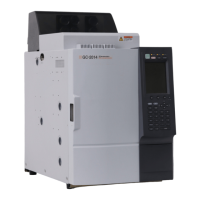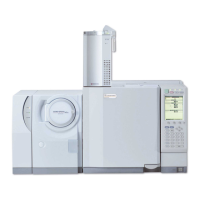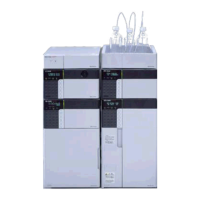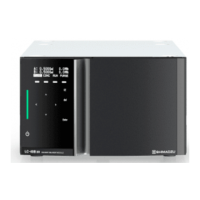93
4.6 Glass insert
4
How to cleanse glass insert
When cleansing glass insert with solvent, ALWAYS remove O-ring.
After cleansing, attach new O-ring.
(1)
Removing septum fragments on silica wool
Septum fragments dropped on silica wool can degrade the analysis reproducibility and can be the
cause of ghost peaks. ALWAYS remove the septum fragments.
Take out silica wool by using thin wire, etc., and remove the fragments.
(2)
Removing stains adhered to the inside of the glass insert
Wipe with gauze soaked in organic solvent (e.g. acetone), or soak the insert in organic solvent and
cleanse with an ultrasonic cleaning unit.
(3)
If the inside of the glass insert is extremely dirty
When you cannot remove stains by solvent cleansing, use the following procedures.
Soak glass insert in an aqueous solution of alkaline detergent for glass cleansing for approx. 1 day.
Rinse the detergent under running water, and rinse with organic solvent (e.g. acetone) and let the insert
air-dry.
If the stains are even more stubborn, you can soak it in an aqueous solution of 1 N nitric acid for 7 to 8
hours, then wash, rinse and air-dry as described above.
Packing Silica wool
Pack silica wool evenly, without napping, and do not pack it too tightly.
If silica wool is not packed properly, it may degrade peak shape and analysis reproducibility. For the amount
and position of silica wool, refer to "3.3 Analysis using capillary column" P. 49.
Precaution for glass insert installation
Referring to "4.5 O-ring for glass insert" P. 89, attach O-ring on glass insert, and then install the insert.
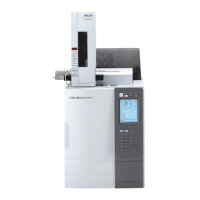
